Eucalypts trees are targeted by a number of deadly pests. With Elmsavers, your treatment rejuvenates damaged trees and avoids unnecessary and costly removal!!
- Gum Tree Skeletoniser (Lepidoptera) sp Uraba.Lugens *
- Leaf Blister Sawflies (Hymenoptera) Phylacteopohaga sp *
- Steel Blue Sawflies (Hymenoptera) Perga affinis *
- Eucalyptus leaf beetles (Coleopteran) sp *
- Psyllids-Lerp (Hemiptera) * Thaumastocoris Bugs
- (Hemiptera) Borers: Lepidopteran sp.
- Borers: Coleopteran sp
Gum Leaf Skeletoniser
Uraba. Lugens
- Moths are a dull grey and brown in colour
- Wingspan is approximately 25-30mm
- Eggs Green 1mm in diameter, cylindrical changing brown during development
- Caterpillars are extremely hairy with yellow and brown markings
- Multiple moults with old castings attached “Hats” from earlier instars
- Up to two lifecycles per year
- Period of damage: April – September and November – February
- Mature caterpillars are approximately 20-25mm
- Main damage, caterpillars strip out leave material leaving only leaf veins causing defoliation.
Gum Leaf Skeletoniser damage in Box Iron Bark Woodland peaks during the spring, Caterpillars can quickly defoliated susceptible Eucalypt Species. Consecutive defoliation will weaken the trees defence mechanisms a potential for disease establishment.
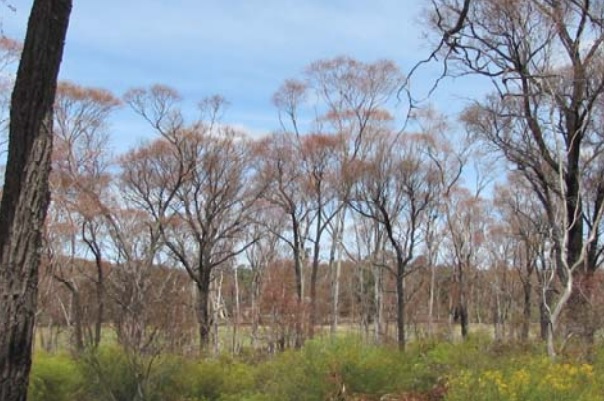
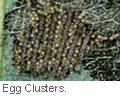
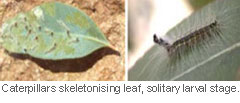
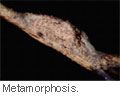
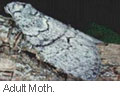
Source:: Images PIRSA Forestry South Australia, Merlin Crossley and Peter Marriott. Document & Images by Steve Parton, Elmsavers
Other Lepidopteran Pests
- Autumn Gum Moth
- Bag Shelter Moths
- Case Moths
- Cup Moths
- Emperor Gum Moths
- White Stemmed Gum Moth
- Older first generation Neonicotinyl insecticides such as imidacloprid, fail to control lepidopteran insects at double the standard label dose rate.
- Refer to New Zealand Forest Bio-Security Insecticidal Trials – Gum Leaf Skeletoniser (Uraba.L ugens)
- http://www.nzpps.org/j ournal/61/nzpp_611740.pdf
- Alternative chemistries are required; our proprietary systemic’s specific for tree injection covers all aspects including Gum Leaf Skeletoniser other Lepidopteran borers while active within the xylem.
Leaf-blister Sawfly
- The Leaf-blister sawfly is a common pest attacking many different species of eucalypt
- Sawflies are wasps 5mm long; it causes leaf blister damage during the larval stages of its lifecycle
- The Leaf Blister Sawfly goes through a Complete Metamorphosis during its lifecycle
- Leaf-blister sawfly larvae 5mm, feed beneath the upper surface of the leaf that causes it to Blister
- Blistered leaves appear speckled, bronzed and desiccated; multi seasonal outbreaks may cause dieback
- Larval and pupal stages are all within the blister
- Treatments available all year round.
- Image sequence below demonstrates the effectiveness and post treatment recovery in one year.
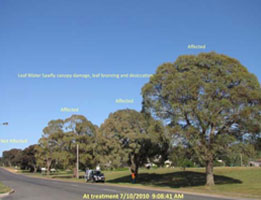
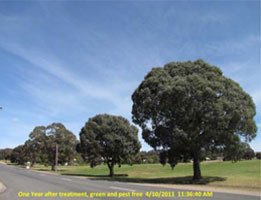
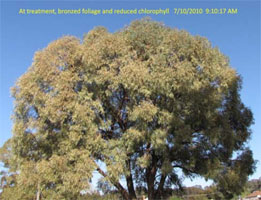
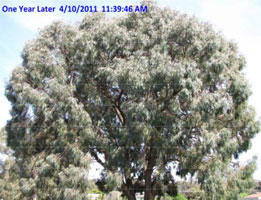
Tree injection treatment for Leaf Blister Sawfly on Narrow Leafed Black Peppermint E.Nicolii, treatment will control this insect pest for two or more years. Location: St Arnaud Northern Grampians Shire Central Victoria. (Environmental Tree Technologies Pty Ltd)
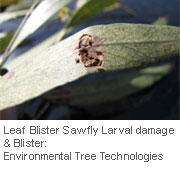
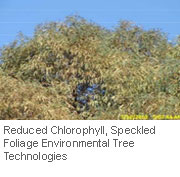
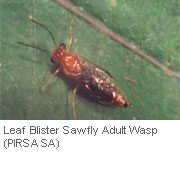
Steel Blue Sawfly
Perga dorsalis
- The Steel Blue sawfly is a common pest attacking many different species of eucalypt, larval stages of the insect’s lifecycle cause significant damage to trees and in many cases complete defoliation
- Female Sawflies are 20mm long; steel blue in colour with yellow wings and antennae, yellow legs and markings on the head and thorax
- Male sawflies are uncommon they are smaller; they are not required for reproduction (Asexual)
- Named after the saw like appearance of the female wasp’s ovipositor which is inserted under the leaf surface, egg laying occurs from January to May, females die after egg laying
- The Steel Blue Sawfly goes through a Complete Metamorphosis during its lifecycle; one generation occurs annually in southern Australia and multi generational for northern areas of the country
- Steel Blue sawfly larvae “Spitfires” are up to 75mm in length, black and covered with white short hairs, superficially resembling caterpillars but having six legs only, larvae go through six instar moults, they are active during late winter and spring
- Larvae feed and congregate on mass on branches, when disturbed they tend to raise the tips of their abdomens and eject a fluid smelling of eucalyptus causing irritation to eyes on contact, clusters migrate to the ground in search of new food sources
- During mid spring larvae congregate at the tree base to pupate, burrows may up to 10cm deep, cacoons are brown and cylindrical 2.5cm long and 10cm across, and pupa can remain in the cacoon for many years if climatic conditions are unfavourable
- Treatments available all year round, a proactive approach is required prior to damage
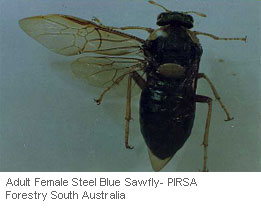
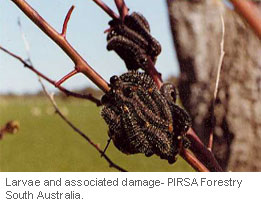
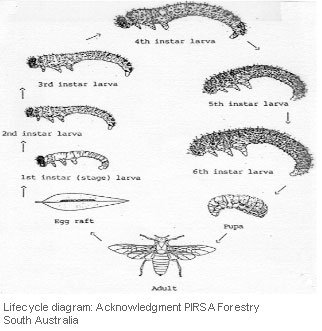
Lerp and Psyllids
- Lerp insects and psyllids are related to scale insects (coccids)
- Lerp and Scale insects are immobile during the nymphal stage
- Psyllids are fully mobile in all stages of the lifecycle
- Lerp nymphal honeydew hardens into a “Lerp” which shelters and protects the nymph during feeding
- Psyllids honeydew doesn’t harden and is associated with an increase in “Sooty Mould” a secondary fungal disorder
- Scale insects are foliar but also attach to the stems and growth tips of woody plants.
- Lerp insects all have essentially the same life cycle
- Females lay between 45 and 700 eggs hatching within 10-20 days
- Nymphs or “Crawlers” insert their stylets also known as mouthparts into the leaf and begin feeding
- Eggs laid in late summer give rise to nymphs which over winter in that stage and do not become adults until the following spring
- Lifecycle, Gradual Metamorphosis, Nymphs pass through five stages or moults before becoming winged adults
- The whole life cycle takes approximately 1-2 months but may be longer, depending on temperature
- Lerp species and their lerp vary in shape and form ranging from cones, univalves, bivalves, basket and fan shaped
- Treatments available All Year Round
Common Lerp and Psyllid Insect Pests
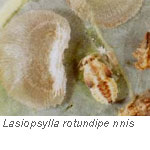 3 x Generations Annually
3 x Generations Annually
Host Species: Wide Range. E.melliodora + Numerous other species
Damage: Moderate-High Heavy defoliation in Spring after adult phase, trees take some time to recover, can suffer some tip dieback
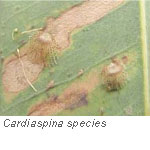 3 x Generations Annually
3 x Generations Annually
Host Species: E.camaldulensisE.blakelyi,E.fas ciculosa E.diversfolia,E. odorata, E.botroides, E.robusta
Damage: Moderate-Severe Gradual damage & premature leaf drop, severe cases over successive seasons result in dieback & possible tree death.
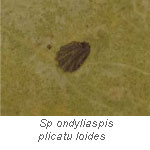 3 x Generations Annually
3 x Generations Annually
Host Species: E.camaldulensis. E.globulus E.nitens,E.leucoxylon + Numerous other species
Damage: Low-Moderate Some discolouration where feeding, common but low in density.
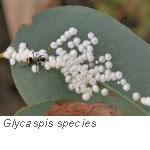 2-4 x Generations Annually
2-4 x Generations Annually
Host Species: Wide Range. E.camaldulensis. E.globulus E.saligna, E.ni tens,E.blakelyi, E. Radiate, E. Oblique, E.leucoxylon E.Cypellocarp, E. maculata, E.tereticornis
Damage: Low-Moderate Prefers young foliage but also found on mature leaves. Excretes plentiful amounts of Honeydew, associated with ant activity and “Sooty Mould”
Source: PIRSA reference and some images, Brisbane Insects image, Images and reference Environmental Tree Technologies P/L Lifecycle of Red Gum Psyillid (Glycaspis brimblecombei) Gradual Metamorphosis egg, nymph, adult, several generations per year.
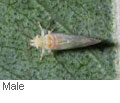
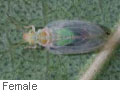
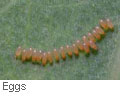
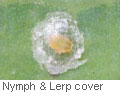
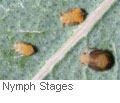
Leaf Eating Coleopteran insect Pests
- Leaf eating beetles cause significant damage and defoliation
- Affect a wide number of species
- Multiple generations per year
- Complete Metamorphosis egg, larvae, pupa and adult
- Leaf beetles damage trees in all stages of the Lifecycle
- Scarab beetles damage trees in the adult stage of the lifecycle
- Leaf Beetles: Family (Chrysomelidae) multiple species
- Three instar larval stage
- Adults 4-15mm in length
- Multiple colours, metallic, pink, yellow, beige or red
- Up to Four generations per year in warmer areas.
“Eucalyptus Tortoise Beetle” Paropsis atomaria lifecycle, a very common species that is found over much of eastern Australia.
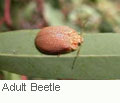
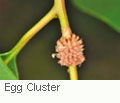
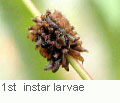
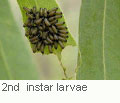
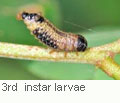
Source: Brisbane insect’s images.
- Scarab Beetles: Family (Scaraba eiddae) multiple species
- Three instar larval stages spent underground feeding on plant material
- Christmas Beetles: Anoplogna thus 34 species
- Adults 5-30mm in length
- Multiple colours, pale to dark brown and iridescent green
- Adults swarming and causing significant damage during the Christmas period
- Repeated defoliation over consecutive seasons can cause dieback and death in trees
- Lifecycle Annual in warmer areas Bi annual in cooler areas
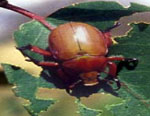
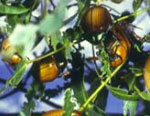
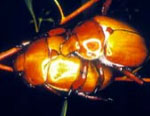
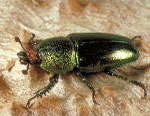
Source: CSIRO Entomology images Author: Steve Parton of Environmental Tree Technologies Pty Ltd.
Treatment
- Treatments involve either tree injection with Ema-Ject® at label rates.
- Comprehensive year round insecticidal and fungicidal treatments for eucalypts and other native tree species.
- Servicing both municipal and private clients in metropolitan and regional areas in South East Australia.
- Undertake large projects in long term control with a minimal environmental impact.
- Actively involved in research and development of new product lines both internationally and locally.
Proof of Effect
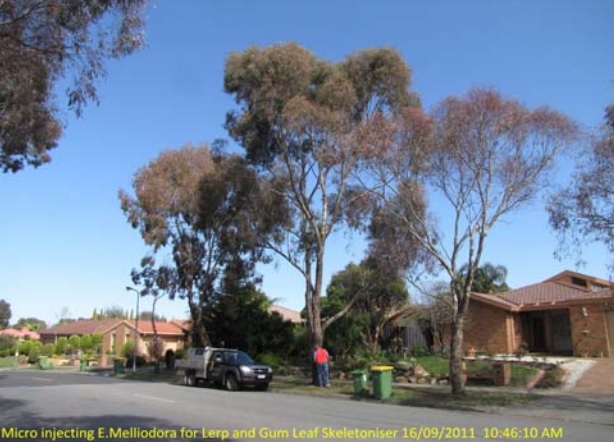
Before: E.Melliodora Yellow Box at Lakeview Drive Lilydale.
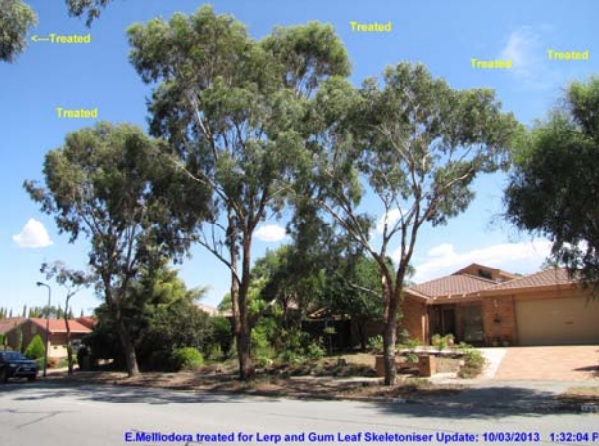
After: Recovery, treatment protects for two or more years.
Contact us today to discuss how we can save your trees.






